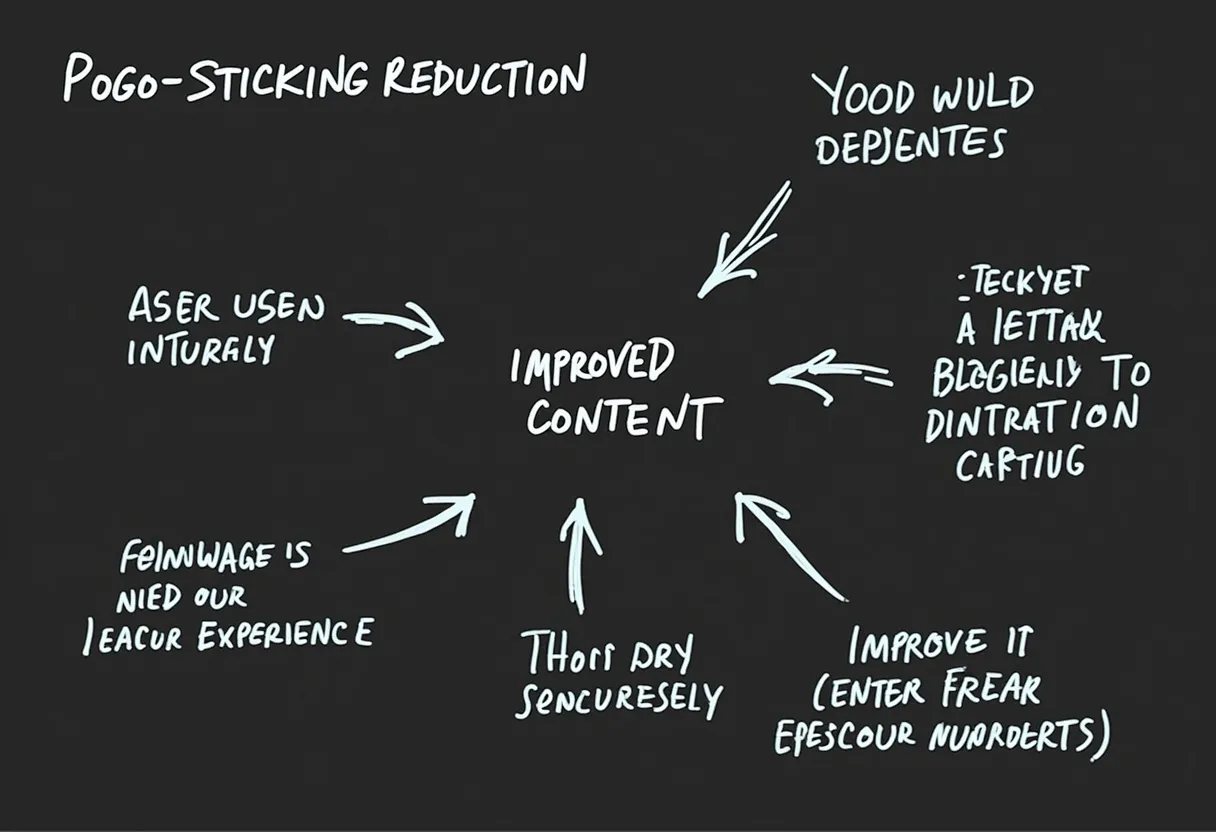Definition
Pogo-sticking in SEO refers to the behavior of a user who quickly navigates between webpages and search engine results pages (SERPs). This typically occurs because they are not finding the information they need on the initial pages they visit. It involves clicking on a search result, spending only a few seconds on the page, and then returning to the SERP to click on another result.
How It Works
Pogo-sticking occurs when users are dissatisfied with the content or user experience of a webpage they visit from a search engine. Here are the key aspects of how it works:
User Behavior
Users search for something, click on a result, and if the page does not meet their expectations, they immediately return to the SERP to try another result.
Relevance and Quality
If the content is irrelevant, low-quality, or does not match the user’s search intent, users are more likely to pogo-stick.
Website Design and User Experience
Poor website design, slow load times, and unresponsive sites can also lead to pogo-sticking. Users may leave quickly if the site is difficult to navigate or if the content is not easily accessible.
Why It Matters
Pogo-sticking is crucial in SEO for several reasons:
User Experience
High pogo-sticking rates indicate that users are not finding what they need, which can lead to a poor user experience.
Content Relevance and Quality
Consistent pogo-sticking suggests that the content may not be relevant or of high quality, which can affect user satisfaction and trust in the website.
Ranking
While pogo-sticking itself is not a direct ranking factor, the underlying issues that cause it, such as low relevance or poor user experience, can lead to lower rankings in search results. Search engines use signals like click-through rate (CTR) and dwell time to evaluate the quality and relevance of a website’s content.
Best Practices
Match Content with User Intent
Understand the types of search intent (informational, navigational, commercial, transactional) and align your content accordingly to meet the user’s needs.
Enhance User Experience
Invest in a modern, SEO-friendly design that is responsive and works well across different devices. Use tools like Google’s Mobile-Friendly Test to ensure mobile compatibility. Optimize page load speed, as slow-loading pages can frustrate users and lead to pogo-sticking. Use clear and intuitive navigation, engaging visuals, and readable font sizes to improve user engagement.
Reduce Organic Bounce Rate
Analyze bounce rates and exit pages in Google Analytics to identify areas for improvement. Focus on reducing bounce rates by ensuring that landing pages are relevant to the search terms driving traffic to them. Regularly update and refine landing page content to reflect current changes and user needs.
Use Compelling Titles and Introductions
Write compelling titles and introductions that capture the user’s attention immediately. Use eye-grabbing visuals above the fold to keep users engaged.
Implement FAQs and Internal Links
Include FAQs to answer common questions and keep users on the site longer. Strategically place internal links to guide users deeper into the site, reducing the likelihood of them returning to the search results.
Monitor and Adjust
Use tools like Semrush to track key metrics such as page load speed, CTR, and user behavior. Consistently evaluate and adjust your site’s performance to improve user satisfaction and reduce pogo-sticking.
Related Terms
Bounce Rate Reduction
Reducing bounce rates involves making your content more engaging and relevant to keep users on your site longer.
Behavioral SEO Signals
These are indicators used by search engines to measure user interaction with your site, such as time spent on page and click-through rate.
Dwell Time Optimization
Optimizing dwell time refers to increasing the amount of time a user spends on your page, signaling to search engines that your content is valuable and relevant.
Click-Worthy Meta Descriptions
Writing compelling meta descriptions can increase your CTR, leading to more traffic and potentially less pogo-sticking.
Cohort SEO Analysis
This involves analyzing user behavior over time to better understand how different segments interact with your site, providing insights for improvement.
Content Freshness
Regularly updating your content can keep it relevant, meeting current user needs and reducing the chance of pogo-sticking.
Core Web Vitals Optimization
Optimizing these essential aspects of web performance—such as load time, interactivity, and visual stability—can significantly enhance user experience.
User Experience Signals (UX)
Improving overall user experience can reduce pogo-sticking and bounce rates, leading to better search engine rankings.
User Behavior Signals
Understanding how users interact with your site through analytics can help you make data-driven changes to improve their experience.
CTR Optimization (Click-Through Rate)
Captivating headlines and meta descriptions can improve your CTR, bringing more engaged users to your site.
Conclusion
Pogo-sticking is a significant user behavior that can negatively impact your SEO efforts. By understanding the reasons behind pogo-sticking and implementing best practices such as matching content with user intent, enhancing user experience, and optimizing for key performance indicators, you can reduce pogo-sticking rates. This, in turn, will help improve user satisfaction, enhance content relevance, and potentially boost your search engine rankings.



